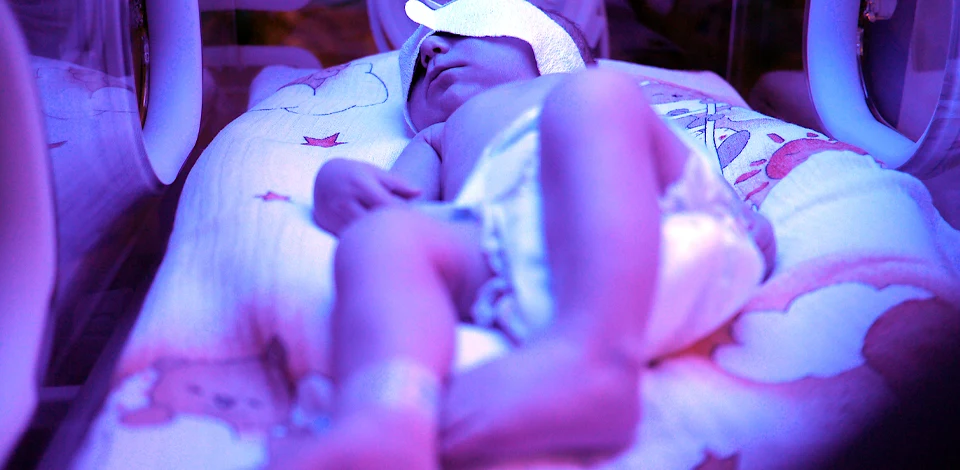The shoulder has a network of nerves called The brachial plexus in it. The primary function of these nerves is to carry sensory and movement signals from the spinal cord down the arms and to the hands. This network of nerves is susceptible to injuries that affect people of all ages. Newborns can have a brachial plexus injury, as well. Scroll down to learn everything you as a parent need to know about newborn brachial plexus injuries.
What is a newborn brachial plexus injury?
Newborn brachial plexus injury is an injury that affects this network of nerves. There are different kinds of this injury, depending on the location of nerve damage.
Other names for this injury are Erb’s palsy, brachial plexus birth palsy, and neonatal brachial plexus palsy. The injury usually affects the upper arm. It’s also called Erb-Duchenne paralysis. Some newborns may develop Klumpke paralysis, a brachial plexus injury that affects the lower arm and hand. This type of injury is less common.
The first injury of the brachial plexus with a clinical description of a newborn was reported in the 1760s; different types of the injury were defined in the 1800s.
Identifying these injuries in newborns can be challenging.
How common are newborn brachial plexus injuries?
Unfortunately, newborn brachial plexus injuries are relatively common.
One analysis revealed the incidence of newborn brachial plexus injuries was at 0.3%, whereas the recovery rate was 84%, meaning there could be around 0.5% permanent brachial plexus injuries per 1000 births.
One paper found the incidence of newborn brachial plexus injuries ranged from 0.15 to 3 per 1000 births in various countries.
How does newborn brachial plexus injury occur?
The primary reason for this type of injury is the stretching of the infant’s shoulder during head-first birth. However, pressure on the infant’s raised arms in breech delivery can also cause newborn brachial plexus injury. This network of nerves can also get injured when the newborn’s head and neck are pulled toward the side while the shoulders pass through the birth canal.
Besides stretching, other mechanisms involved in developing this injury include compression, infiltration, and oxygen deprivation.
The occurrence of brachial plexus injury in newborns doesn’t automatically indicate the healthcare practitioner applied excessive force that caused it. The force of contractions in the uterus and maternal pushing are considered sufficient to induce extreme stretching or traction of the brachial plexus. Some antepartum factors may also contribute to the development of these injuries, including some uterine abnormalities that result in compression and malpositioning of the fetus.
What are the symptoms of newborn brachial plexus injury?
The main signs and symptoms of newborn brachial plexus injury include:
- Numbness
- Partial or complete lack of movement
- Weak grip
- Odd position of the arm, e.g., hanging limp or bent toward the body
Brachial plexus injuries in adults are very painful. On the other hand, newborns aren’t in much pain because their nerves behave differently. Only a small portion of newborns with this injury experience pain, and it’s usually when a fracture accompanies it.
Who are the newborns at risk of brachial plexus injury?
Generally speaking, all newborns are at risk of brachial plexus injury. Some infants are more likely than others to develop it. The most significant risk factors may include:
- Breech birth
- Large gestational size (maternal obesity)
- Larger-than-average infant
- Carrying twins or multiple babies
- Difficult or prolonged labor
- Forceps- or vacuum-assisted delivery
- History of delivery with brachial plexus injury
Keep in mind the abovementioned risk factors don’t automatically mean the newborn in these circumstances will have an injury to the brachial plexus. These risk factors aren’t always reliable predictors, studies show.
How is newborn brachial plexus injury diagnosed?
As mentioned above, identifying this injury in newborns can be difficult. A pediatrician can diagnose the damage by performing a thorough physical exam of the newborn. Physical evaluation usually shows the newborn isn’t moving the upper or lower arm or their hand. The doctor may also check the newborn’s Moro reflex or startle response.
Moro reflex occurs when an infant is startled by a loud movement or sound. In response to that loud stimuli, the baby throws back its head, extends its arms and legs, cries, and then pulls them back in. This reflex is absent in the presence of the injury. So, a baby with a brachial plexus injury may not be able to extend and pull back in one arm.
Bearing in mind that newborns typically recover from this injury within the first month to six weeks, you may want to schedule a follow-up appointment with a primary care doctor. However, parents may want to take their infants to a brachial plexus specialist or pediatric orthopedist if their injury persists after six weeks.
Besides a physical exam, healthcare professionals may order CT, MRI, X-ray, or nerve conduction studies to evaluate the function of muscles and nerves. These tests also help rule out other problems and also allow healthcare professionals to determine the extent or severity of the injury.
How is newborn brachial plexus injury treated?
Mild cases of newborn brachial plexus injury usually don’t require treatment. However, doctors may recommend a gentle massage of a baby’s arm for more severe injuries or specific exercises to improve their range of motion.
Physical therapy is sufficient for most newborns with this injury. Babies with severe injuries may need surgery such as nerve transfer, nerve grafts, tendon transfer, or muscle transfer.
The exact treatment approach may vary from one newborn to another, depending on the severity of the injury.
That’s why the long-term outlook isn’t the same for every infant. That being said, most newborns develop near-normal or normal function in the arm even without surgery. Not all newborns make a full recovery. For these infants, the surgical procedure aims to increase strength and improve motion while also supporting the proper development of their shoulders.
The best chance for a newborn to achieve full recovery is through early diagnosis. That way, doctors can recommend prompt and adequate treatment.
Parents are crucial for the treatment of newborn brachial plexus injuries. They need to adhere to the program and physical therapy, exercise with the baby, and observe for changes in their grip and arm function.
Conclusion
Newborns, like adults, can develop brachial plexus injuries. In infants, these injuries usually occur due to stretching during a breech delivery. Children typically don’t feel much pain with this injury, but their arm function suffers. For that reason, timely diagnosis is crucial. Guardians should consult the doctor as soon as they notice problems with the baby’s arm or hand. Timely diagnosis improves treatment outcomes.
Most babies don’t need surgery, but others do. Physical therapy is the cornerstone of the treatment of this injury. Parents work together with physical therapists and adhere to the treatment regimen to improve the baby’s range of motion, flexibility, and strength. Most children regain normal function of the affected arm or hand.

